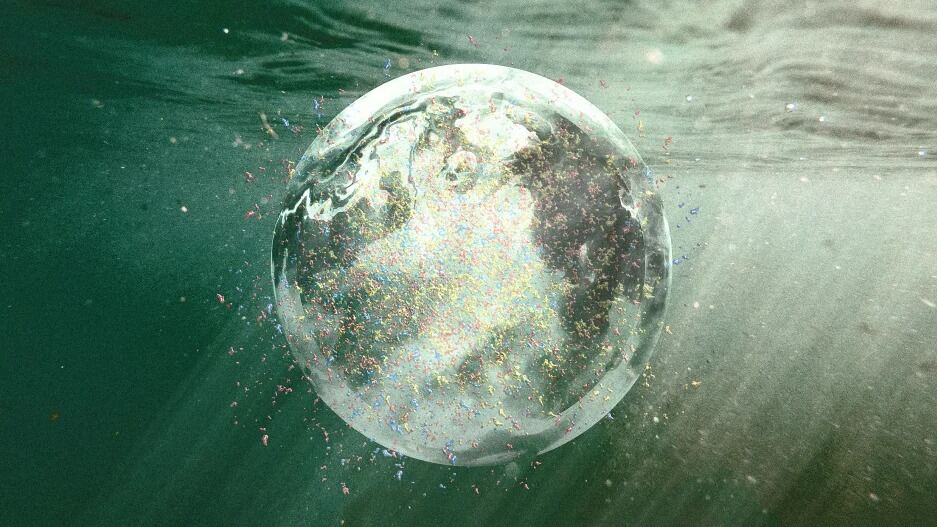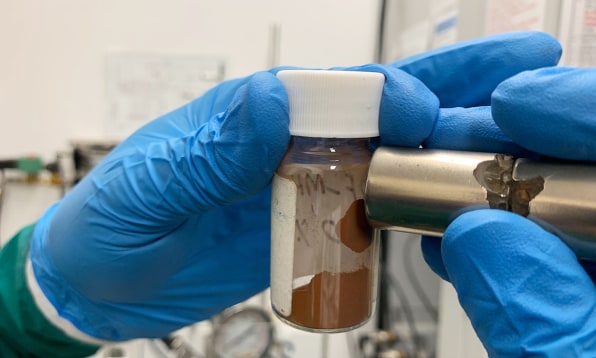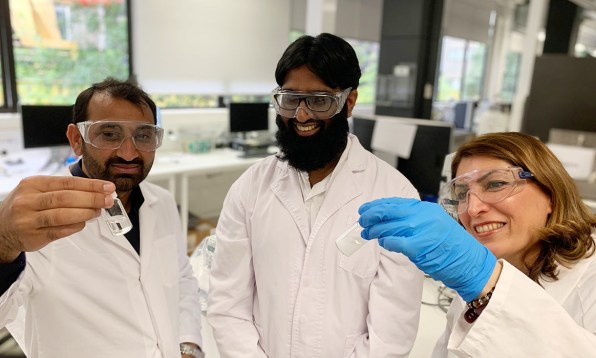- | 8:00 am
This new magnetic powder can capture microplastics in water
When plastic waste breaks down into tiny fragments, it can’t be detected at wastewater treatment plants. This new material can help.

When plastic waste breaks down into the smallest fragments, less than 1 micrometer wide—or 1,000 times finer than human hair—it can’t be detected at wastewater treatment plants. But researchers have developed a new material that can capture and remove it before it washes into river or ocean waters and enters the food chain.

Currently, wastewater treatment plants have the ability to filter out larger pieces of microplastic, but the smallest fragments escape, Eshtiaghi says, noting that “due to both lack of appropriate and easy detection instruments and lack of technology for removing microplastic smaller than 1 micrometer, a huge amount of microplastic [is] released into bays and the sea.”
Once the plastic is in waterways, it absorbs other pollution. Then, as aquatic animals eat it, both the plastic and the pollution make their way up the food chain. In a study last year in Canada, 99% of the fish sampled had at least one particle of microplastic present, with the smallest fish showing the highest concentration.
Microplastics have also been found in sea salt, bottled water, fruits and vegetables, and packaged meat, among other foods. Unsurprisingly, plastic has also been detected in humans; this year, microplastics were even documented in human blood for the first time. It isn’t yet clear what that means for human health, though Eshtiaghi says other studies show that the smallest microplastic fragments stay in the body and could contribute to autoimmune diseases, cancer, infertility, and other problems.

Conventional filters used to clean up plastic can’t capture the smallest fragments, and even nano-sized filters designed specifically for the task work slowly, if at all. Clean-up approaches that accelerate the breakdown of plastic can release other pollution, and still don’t work quickly enough for wastewater treatment plants. This new technology can work within an hour, the researchers say. The plastic that’s captured can then be recycled.
Eshtiaghi’s team is looking for industrial partners to scale up the technology. Of course, even if it could work well at wastewater treatment plants, that’s only part of the solution: The ocean is already filled with microplastic, and although the technology could theoretically work in nature, it’s not clear how that would happen in practice.
The biggest challenge remains finding a way to end the flow of new plastic waste in the first place—not only larger items like plastic packaging but also lesser-known waste like the millions of tiny plastic fibers that can wash off of synthetic clothing when you do laundry.






































